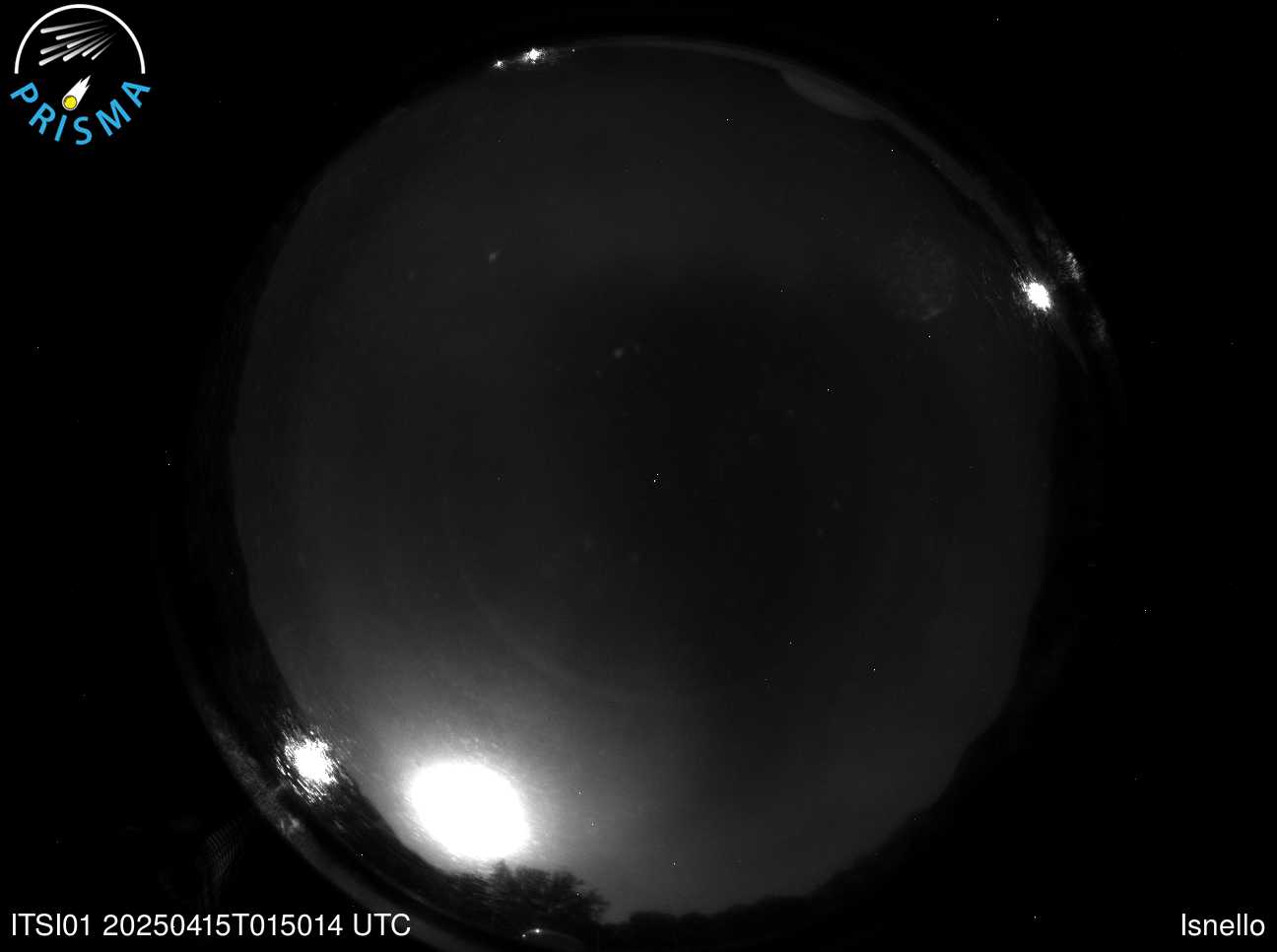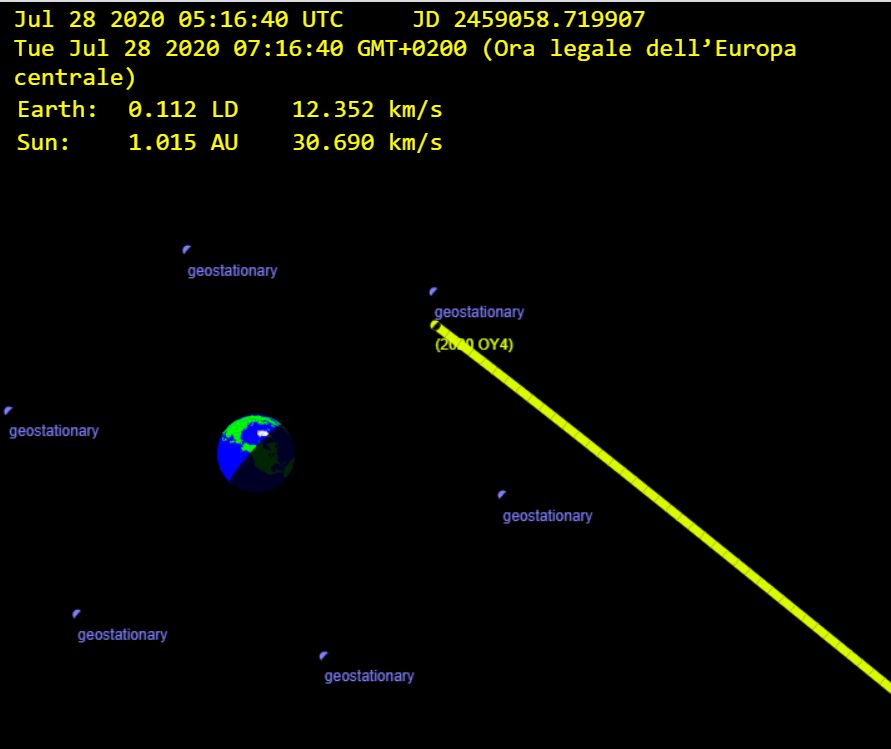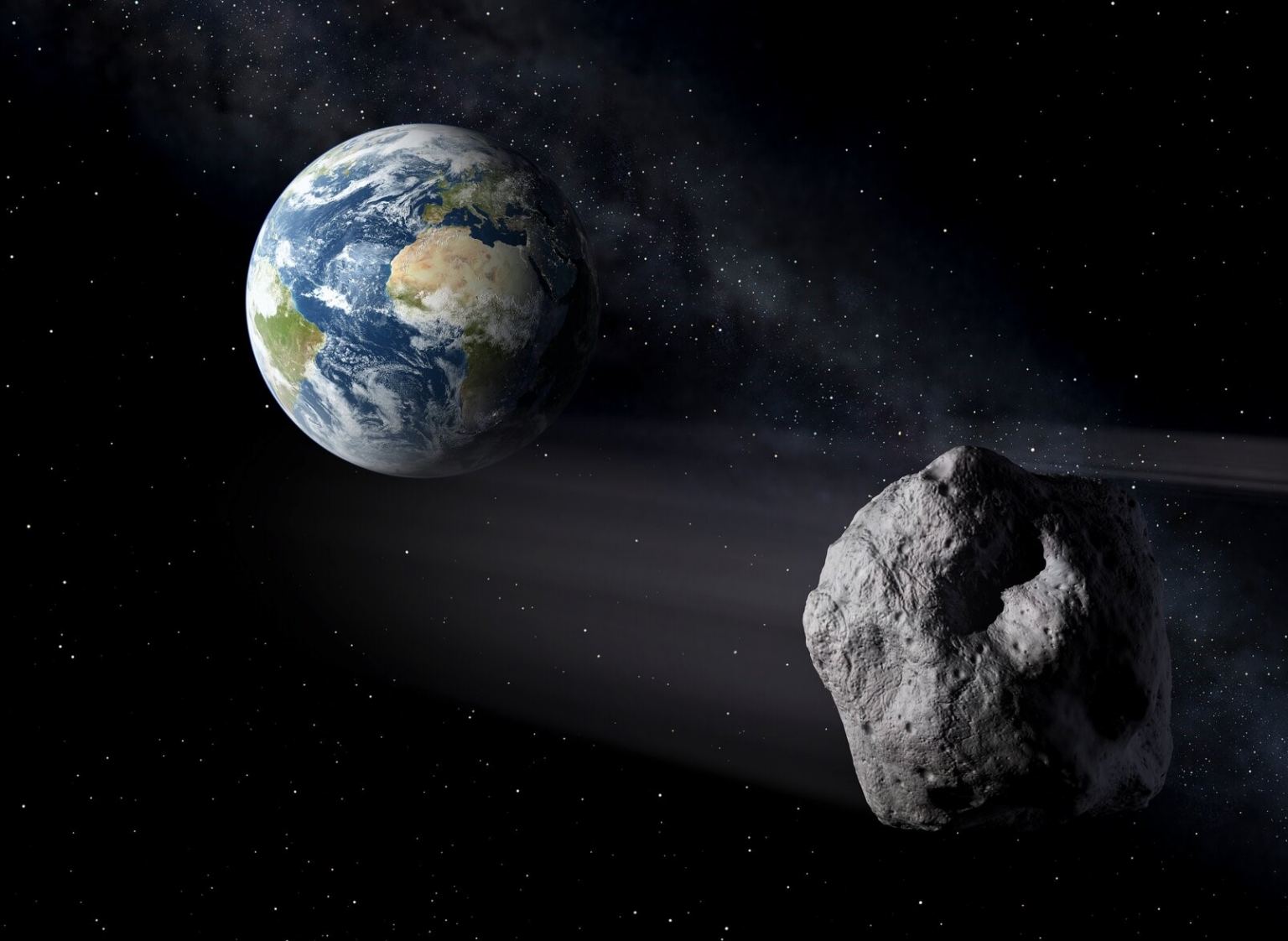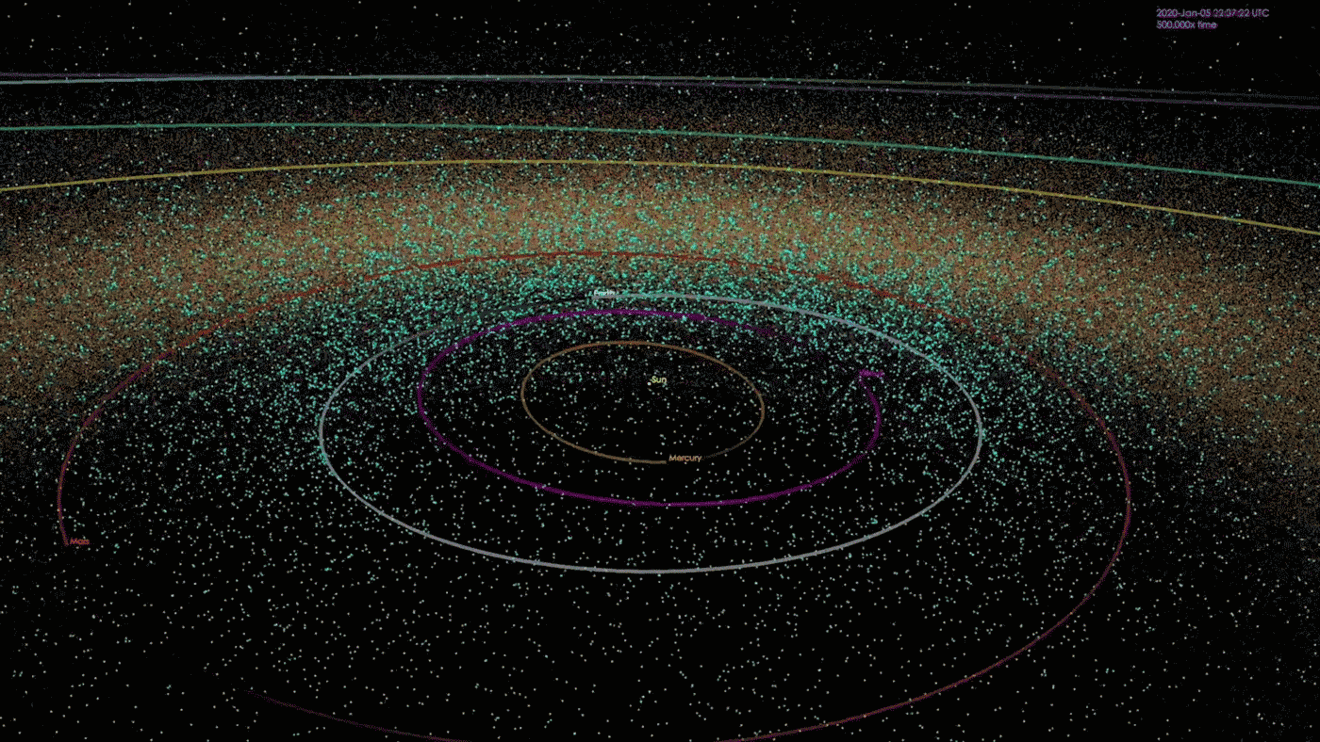Called minor bodies of the Solar System, most asteroids orbit in the so-called Main Asteroid Belt, between Mars and Jupiter, consisting of about 800 000 known bodies (scientific models estimate the total number to be in the order of one million).
A small fraction of the population of asteroids and comets orbit in the proximity of the Earth: these are the Near-Earth Objects (NEOs).
NEOs are classified into Near-Earth Comets, (NEC, comets) and Near-Earth Asteroids (NEA, asteroids).
Due to their distribution, orbits and gravitational interaction with our planet, NEAs may represent an Earth-impact hazard. Therefore, constant monitoring is required to calculate their orbital parameters in order to know how the orbits of these bodies change over time. (Animation: all known asteroids between Jan. 1, 1999 and Jan. 31, 2018 Credit: NASA/JPL)
A second asteroid belt lies beyond Neptune, the Edgeworth-Kuiper Belt, which is 20 times larger and 20 to 200 times more massive. These bodies are referred to as Trans-Neptunian Objects (TNOs), and their study could provide details for understanding its formation and that of the Solar System.
Our planet has a network of astronomical observatories that constantly observe the sky to discover new asteroids by monitoring those already known, as well as those dangerous to our planet.
This network of observatories is coordinated by the Minor Planet Center (MCP), the International Astronomical Union (IAU) organization that centralizes the collection and analysis of all observations of minor bodies in the Solar System to define their dynamic characteristics.
Since March 2019, GAL Hassin has became part of this “Space Surveillance Network” with Galhassin Robotic Telescope (GRT) under MPC code L34.
Till today its contribution has been significant both in terms of accuracy of measurements and in terms of speed: in 41% of the cases GAL Hassin has been the first observatory in Europe to provide the international scientific community with the position (astrometry) of these potentially dangerous objects; in 72% of the cases it has been among the top three. Furthermore, in a couple of cases the timing and precision of GAL Hassin’s observations were crucial to establish with accuracy the (extremely short) distance at which the Earth would have been grazed by the two NEO asteroids, 2020 OY4 and 2020 VT4.
GAL Hassin is involved in international projects for the monitoring and characterization of minor bodies: the NEOROCKS and the International Asteroid Warning Network (IAWN), as well as collaborating for the Intestellar Probe Project of JPL-NASA and Johns Hopkins University (APL), which concerns the study of new space mission concepts to reach the dwarf planets and minor bodies of the trans-Neptunian region.
GAL Hassin is involved in acquiring astrometry of some TNOs over a very large time range (necessary due to their very slow motion), which will then be sent to the Minor Planet Center (MPC) for calculation and improvement of the orbits. Other collaborations with European research organizations are being activated.
PRISMA Project
Since May 4, 2019, GAL Hassin is part of the PRISMA-First Network for the Systematic Monitoring of Meteors and Atmosphere.
The PRISMA project, promoted by the National Institute for Astrophysics (INAF), is based on a network of all-sky cameras, installed in different locations throughout the Italian country, to be dedicated to the observation of bright meteors – the so-called “bolids” – with the aim of determining the orbits of the objects that cause them and delimit with a good degree of approximation the areas of the possible fall of meteorites, which can be associated with these events.
The participation of GAL Hassin in this network is of strategic importance because, with the triangulation of three PRISMA cameras located within a radius of about 90-100 km, it is possible to know the direction, speed and the location of the possible fall of meteors in the Mediterranean area.
In 2020, 6 events were recorded, which were defined as “minor events” because none of them resulted in meteorite fragments reaching the ground.
In 2021, the PRISMA camera ITSI01 detected 20 events, none of which were associated with a fireball that may have reached the ground.
In 2022, the PRISMA camera detected several fireballs between 14 and 15 December 2022 during the peak of the Geminids meteor shower. For further information: PRISMA – INAF – Pioggia di Geminidi sulla Sicilia.

Asteroids and Comets observed
—
Comet 46P Wirtanen, named the 2018 Christmas comet, was photographed on the cold evening of December 19, with the 40 cm Galhassin Robotic Telescope 1 (GRT1), f/3.8 focal ratio, 10 second exposure time, L (neutral) filter and 3×3 pixel binning. The landscape was obtained with a Canon EOS 5D Mark II, focal ratio f/4, ISO 1600, exposure time 10 seconds and focal length 17 mm. Credits: GAL Hassin/Alessandro Nastasi
Interstellar Comet 2I/Borisov. The images were combined to create an animation showing the motion of the comet in the sky over the course of about 1 hour of observation. Each frame of the animation corresponds to a combination of 5 images (150 sec = 2.5 min), where stars can be seen as stripes in the sky. In addition, in the third frame you can see the track of an artificial satellite that crossed the field of view. Credits: GAL Hassin/Alessandro Nastasi
Between November 14 and 15, 2020, GAL Hassin with its Galhassin Robotic Telescope 1 (GRT1) was the first observatory in Europe to observe and confirm the position of asteroid 2020 VT4 and, in particular, to define its orbital trajectory. Credits: GAL Hassin/Alessandro Nastasi
GAL Hassin took part in the the 99942 Apophis 2021 Observing Campaign. This campaign is organized by the International Asteroid Warning Network (IAWN) to exercise the observing resources and characterization capabilities that may be applied to a near-Earth object on a reasonably short timescale. Credits: GAL Hassin/Alessandro Nastasi
It’s our job to make sure the solar system is well behaved. Asteroid strikes are what we call low-probability, high-consequence events. If we’re not investing in some kind of insurance, one of them, one day, could take us all out.
Don Yeomans
Related articles
-

Il GRT1 del GAL Hassin conferma: l’asteroide 2020 OY4 non distruggerà i satelliti per telecomunicazioni
-

18 April 2021
Apophis, un ritorno senza collisione con la Terra
by: Sabrina Masiero
-

5 February 2021
E quindi uscimmo a riveder l’asteroide 2017 FH128
